An RFID Reader is, according to Business Matters magazine, the future of retail.
Many people think that using an RFID Reader means they can only track physical and tangible assets such as items that they store in a warehouse, however there are numerous other uses for this technology. Employees and executives alike who work in the tech industry are beginning to see just how much you can track with RFID technology.
Here are five of the most intriguing assets we believe you can track.
1. Logistics and Supply Chain Management
Tracking inventory in a warehouse is perhaps one of the most popular uses of a portable RFID reader. While you might not initially think that this applies to your company, every business has inventory that they need to manage and track. In fact, businesses across various industries are beginning to see the benefits of using RFID to manage inventory. In particular they’re noticing the reduction in time and energy wasted on manually tracking items, inventory, and assets.
Offices can track their office supplies inventory, hospitals can track their medical supplies, and restaurants can easily track their perishable items.
A hand-held RFID reader might not be totally necessary or relevant to your industry, but RFID tracking in general is.
By spreading your data across business units, you will be able to cultivate lots of actionable insights. Use this data to track the sale or implementation of various software. Or, use it on a more internal level to enhance your logistics.
2. IT Asset Tracking
By using IT asset tags, you can track one of your most important business assets: any type of information technology.
Typical IT assets include laptops, tablets, server blades, and hard drives. While the physical assets themselves aren’t that important nor valuable, the data that they contain is.
RFID tags cost much less than what you’d have to pay if you lose valuable data assets or put your entire company’s security at risk by letting an IT asset fall into the wrong hands.
Manage the availability and access of certain restricted IT assets by putting RFID tags on each device. Then use a high-level RFID tracking system to track and log who took what, when they did it, and which resources they have returned to the main data/storage area of your office.
You’ll find that you increase your safety, protect your assets, and cut down on lots of wasted time trying to manage asset inventory.
3. Identity Verification
Many companies don’t seem to think of identity verification when it comes to RFID asset tracking, but your employees are your assets too! Not only that, but by restricting access to certain areas of your office, you’re protecting the data that your employees work so hard to cultivate. Iris scanners, fingerprint readers, and biometric tracking are all useful ways to track your most important asset: your employees. Set them up at strategic locations throughout your office to ensure that your employees are safe and that your data is safe as well.
RFID access controls are also great for B2C tech companies that offer services to third-party customers. If you offer parking lot technology, for example, imagine what offering RFID access control tags could do to enhance your business services and offerings.
4. Real-Time Location Tracking
Again, your employees are some of your most-valued assets. Using RFID tags, whether active or passive (depending on your budget) can help you keep track of them.
A RFID chip cost is something that you should factor into the onboarding process of each of your employees, as they’re not that expensive. It’s also worth noting that this is something that you should offer to third-party companies if you’re a tech company that provides software or services.
Using an RFID Reader to ensure that your customers are properly tracking their assets is crucial if you’re covering security software or another kind of service that deals with sensitive data.
If something goes missing, then real-time location tracking via an RFID Reader is going to be invaluable, allowing you to find where the asset went and who took it.
5. Interactive Customer Service
If you don’t view your customers as a crucial aspect of your business, then you’re doing it all wrong. RFID technology is used for so much more than just tracking physical items such as inventory. RFID tags and IoT are making it possible to use this cutting-edge technology to track other assets, such as your customers, their complaints, and service issues.
This is to say that, instead of tracking items, an RFID tag tracks people or a device associated with people (a laptop, mobile phone, IP address, or email address). You can also use RFID tags to create customer profiles. If you hand out loyalty cards whenever you install your SAAS in a new office, then you can include RFID tags in the cards to ensure that when they scan them, you automatically have access to their profiles. Compare an RFID tag cost to how much revenue you lose due to customer complaints, loss of labour hours, and other negative components of your workflow. Including RFID tags on loyalty cards and as part of your IoT customer care system doesn’t seem so bad now, does it?
Finding the Right RFID Reader
Ready to start tracking business assets with an RFID Reader?
If these five unique ways to track assets have made you wonder how RFID will work for you, then you’ll need to figure out what is best for you and your company’s functions.
Here at Grabba, we allow you to build a Grabba that caters to exactly what you need out of it.
Enjoy the latest biometric, identity authentication, and data capture capabilities to ensure that you can grow your business in the way you want and need.
Ready to get started? Contact us today.


